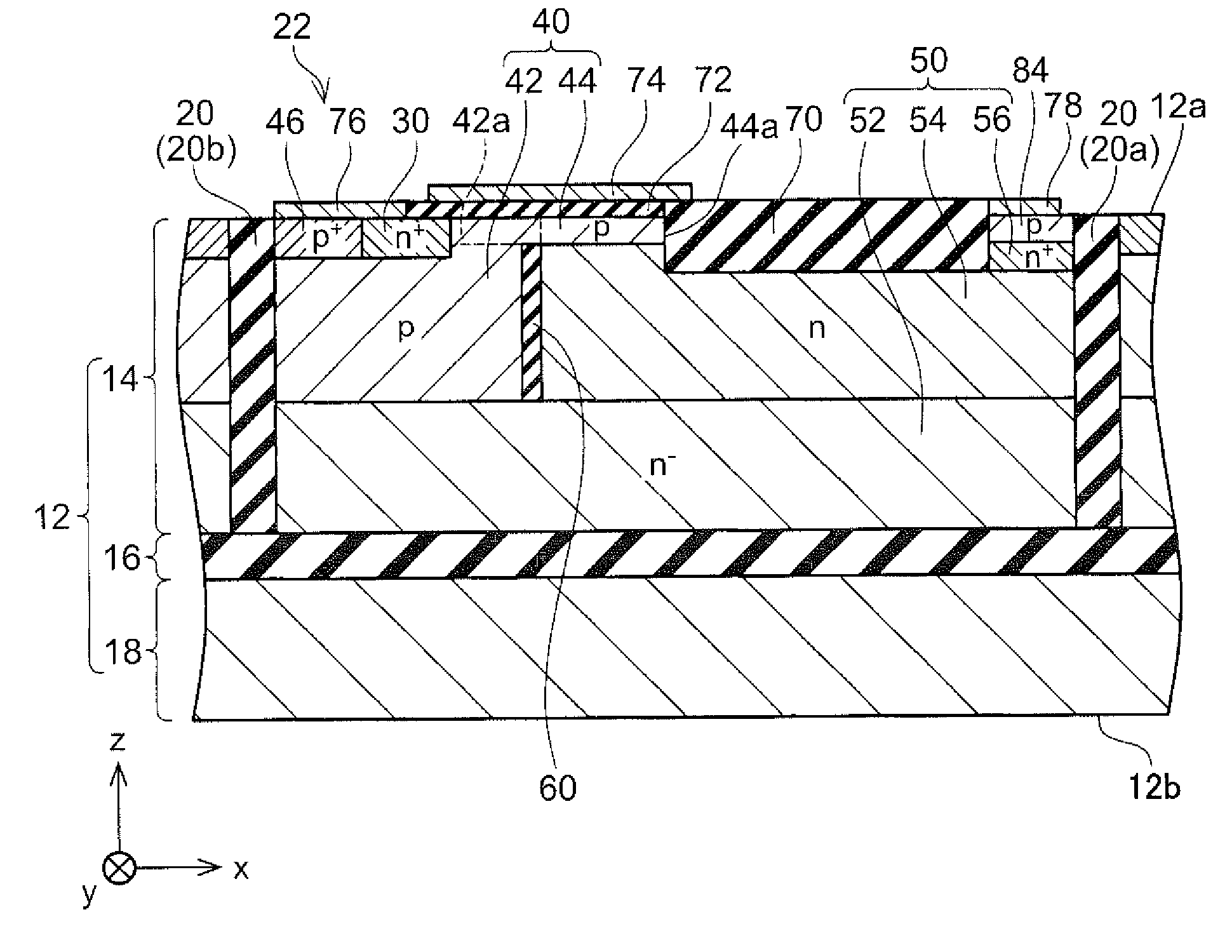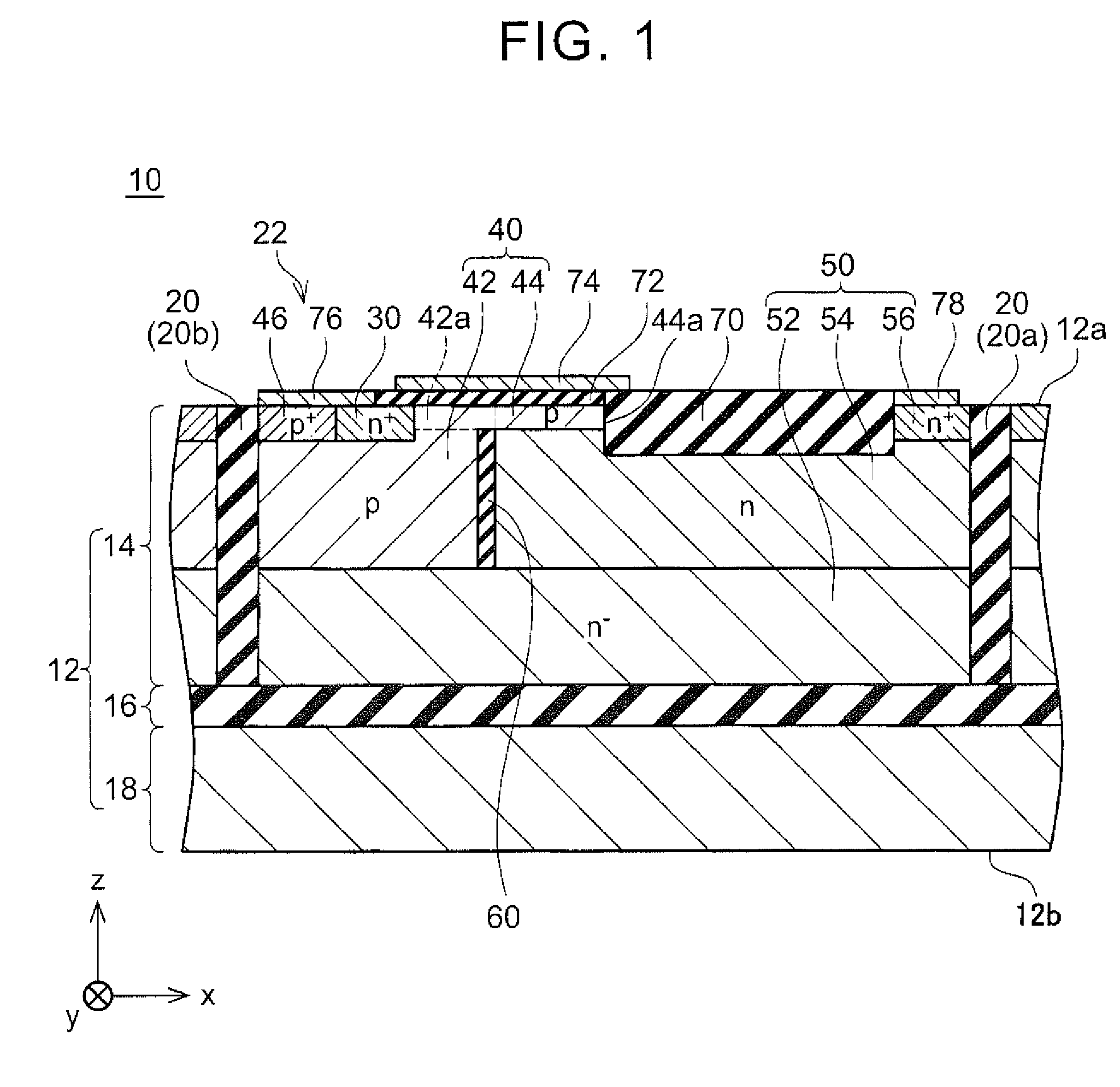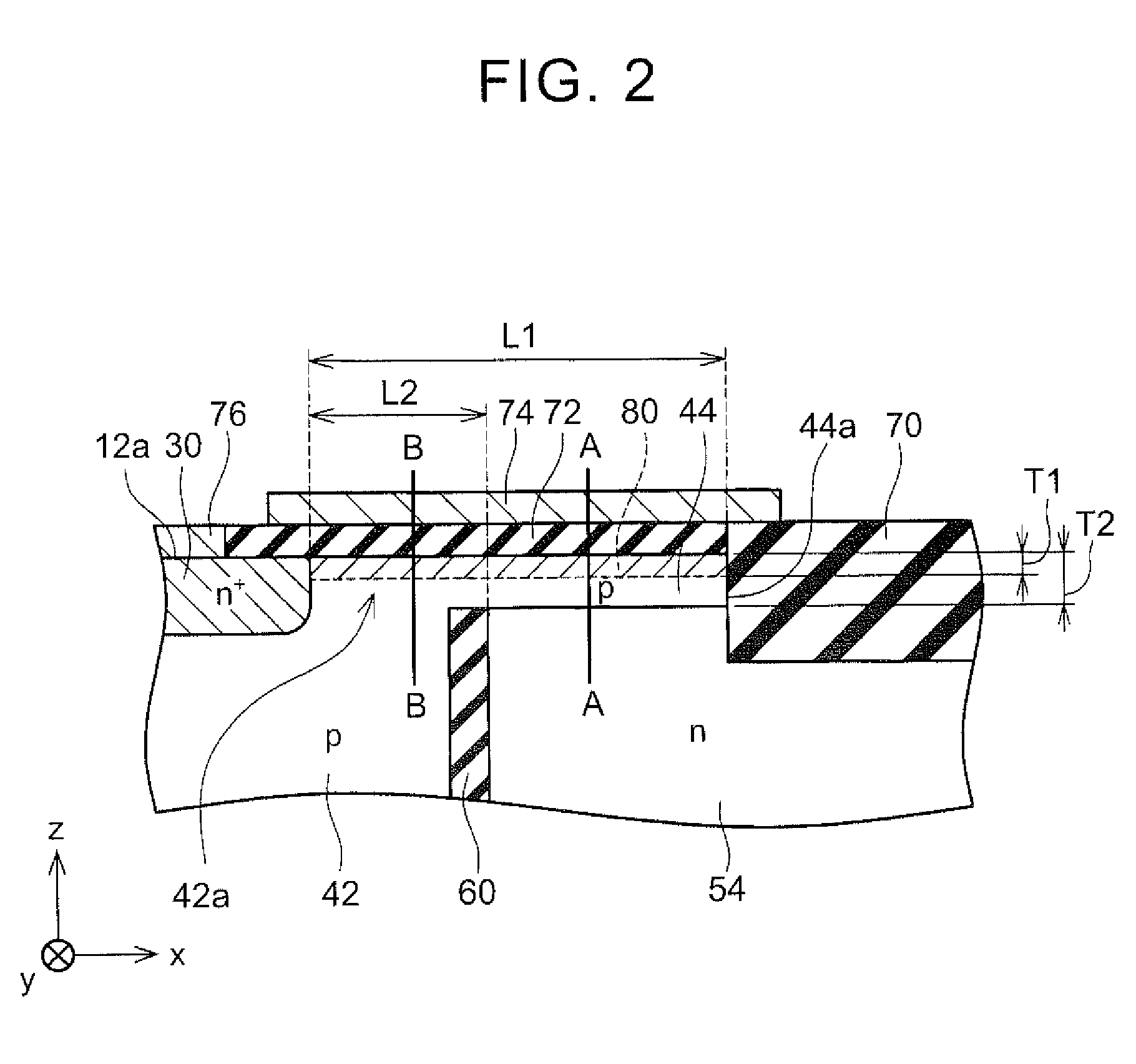Insulated gate switching element and method of controlling the insulated gate switching element
a technology of insulating gate and insulating layer, which is applied in the direction of electronic switching, pulse technique, semiconductor devices, etc., can solve the problems of difficult to reduce the distance between an emitter region and a drift region, and difficult to reduce the channel length to a predetermined length or shorter, so as to reduce the effective channel length, increase the thickness of the channel, reduce the effect of the surface layer portion
- Summary
- Abstract
- Description
- Claims
- Application Information
AI Technical Summary
Benefits of technology
Problems solved by technology
Method used
Image
Examples
Embodiment Construction
[0030]A MOSFET 10 of Example 1 illustrated in FIG. 1 is an n-channel MOSFET. The MOSFET 10 includes a silicon on insulator (SOI) substrate 12. In the following description, a direction parallel to a surface 12a of the SOI substrate 12 (rightward and leftward directions in FIG. 1) is referred to as an x direction, a direction that is parallel to the surface 12a and is perpendicular to the x direction is referred to as a y direction, and a thickness direction of the SOI substrate 12 is referred to as a z direction. The SOI substrate 12 includes a handle layer 18, a box layer 16, and a device layer 14. The handle layer 18 is formed of single-crystal silicon. The handle layer 18 is exposed at a rear surface 12b of the SOI substrate 12. The box layer 16 is formed of silicon oxide. The box layer 16 is laminated on the handle layer 18. The device layer 14 is formed of single-crystal silicon. The device layer 14 is laminated on the box layer 16. The device layer 14 is insulated from the han...
PUM
 Login to View More
Login to View More Abstract
Description
Claims
Application Information
 Login to View More
Login to View More - R&D
- Intellectual Property
- Life Sciences
- Materials
- Tech Scout
- Unparalleled Data Quality
- Higher Quality Content
- 60% Fewer Hallucinations
Browse by: Latest US Patents, China's latest patents, Technical Efficacy Thesaurus, Application Domain, Technology Topic, Popular Technical Reports.
© 2025 PatSnap. All rights reserved.Legal|Privacy policy|Modern Slavery Act Transparency Statement|Sitemap|About US| Contact US: help@patsnap.com



